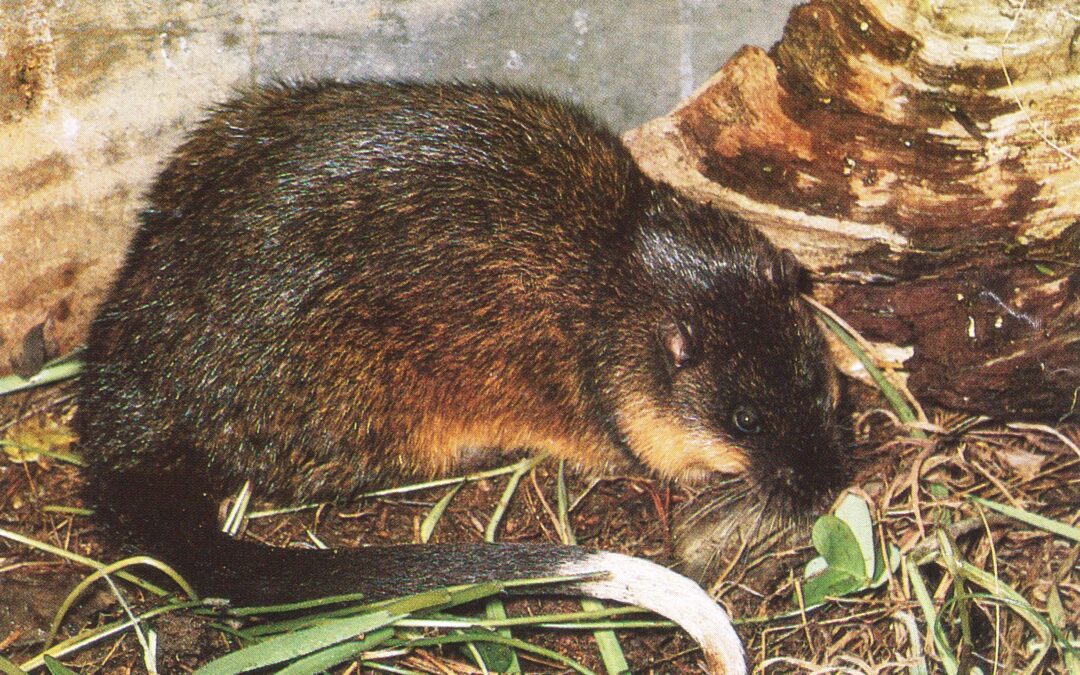The absence of gopher-like mammals in Australia is not owing to genetic constraints because this continent has produced moles and fossorial large herbivores from marsupial stock, and an amphibious carnivore from rodent stock (rakali, image source: Wikipedia Commons).
 Prof. Mumblebard claims: “It is no wonder that mammals such as gophers, bears, pigs, primates, otters, large cats and ruminants were missing in the Australian native fauna. Australia is a remote continent lacking ancestors capable of evolving by adaptive convergence into similar life forms.”
Prof. Mumblebard claims: “It is no wonder that mammals such as gophers, bears, pigs, primates, otters, large cats and ruminants were missing in the Australian native fauna. Australia is a remote continent lacking ancestors capable of evolving by adaptive convergence into similar life forms.”
 Robin and the Honey Badger respond: “The assumption of phylogenetic constraints is refuted fourfold by Australia’s fossorial and subterranean mammals. Firstly, Australia has the most extremely subterranean of all mole-like mammals: the marsupial moles. Secondly, the largest fossorial herbivores on Earth – hairy-nosed wombats – evolved here. Thirdly, among rodents this continent produced the most carnivorous of amphibious rodents on Earth: the rakali. And fourthly, gophers and gopher-like rodents have evolved independently at least eight times on other continents.
Robin and the Honey Badger respond: “The assumption of phylogenetic constraints is refuted fourfold by Australia’s fossorial and subterranean mammals. Firstly, Australia has the most extremely subterranean of all mole-like mammals: the marsupial moles. Secondly, the largest fossorial herbivores on Earth – hairy-nosed wombats – evolved here. Thirdly, among rodents this continent produced the most carnivorous of amphibious rodents on Earth: the rakali. And fourthly, gophers and gopher-like rodents have evolved independently at least eight times on other continents.
If Australia’s fauna has shown extreme genetic plasticity through evolutionary time in some lineages, why shouldn’t this plasticity apply to all lineages? The ancestral rodents in Australia probably had the same potential to evolve into gopher-like forms as elsewhere but lacked the ecological resources for such evolution. It is the poverty of Australia as an environment – and in particular the lack of herbaceous tubers on which gopher-like rodents depend – that constrained the evolution of similar animals here, not the genetic resources of the ancestral stock. Similarly, the poverty of other resources in Australia is likely to have precluded the evolution of bears, pigs, primates, otters, large cats and ruminants regardless of the genetic potential for marsupials to evolve into similar life forms.”
Please join us here at the Bio-edge with your own comments. In the discussion below we encourage links to any evidence supporting either Prof. Mumblebard or Robin and the Honey Badger.
Video 1: Footage of a hairy-nosed wombat burrowing.
Video 2: This bio-bullet in audio.

Figure 1. The Australian marsupial mole is subterranean and rarely comes to the surface (image source: Wikipedia Commons).

